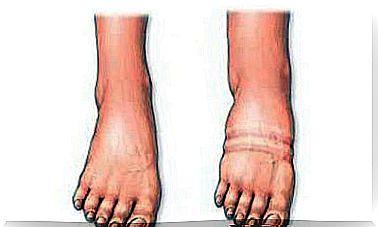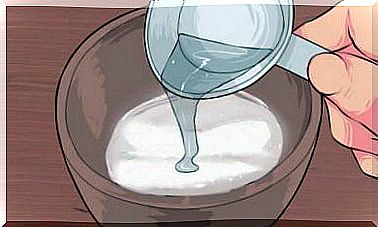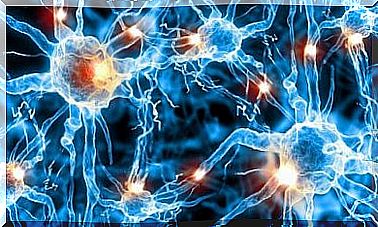10 Possible Causes Of Pain In The Body

Body pain is a common symptom that occurs for many different reasons. From temporary ailments to chronic autoimmune diseases. They can cause disorders that affect the patient’s quality of life.
The causes of pain in the body are very diverse. This is such a common symptom that it can actually be attributed to almost any condition. It is also one of the common reasons for visiting a doctor.
It is defined as a subjective experience that has an emotional impact and leads to a deterioration in the quality of life, both for the patient and his environment. This is especially true in chronic cases.
In many cases, pain will evolve rapidly, as in the case of infection. And it is expected to be self-limiting. On the other hand, in other cases it may be prolonged and even become chronic. Today we talk about 10 causes of body pain that are relatively common among the general population.
Body pain – 10 common possible causes

The flu is very common and the pain it causes is severe because it can leave us in bed for days.
1. Flu
Influenza is an acute respiratory disease caused by influenza A or B viruses and occurs mainly in winter. It is found all over the world, and there is no geographic area that is free from it during the colder seasons.
The infectious process itself is self-limiting and uncomplicated. However, it is associated with higher mortality in certain risk groups, such as those with chronic conditions and those with immunosuppression. Annual preventive vaccinations are recommended for them.
In patients with uncomplicated flu, the illness may last for a week or more. It manifests itself with respiratory problems such as mucus, a sore throat and coughing. Along with fever, headache, muscle pain and weakness. Inflammation, especially in the throat, chest and lungs, can also be painful.
2. Fibromyalgia
Fibromyalgia is the most common cause of chronic extensive skeletal and muscular pain in the body. It occurs in 2% to 8% of the population. Pain is often accompanied by fatigue, memory problems, and sleep disturbances. The etiology is unknown.
It is most common in women between the ages of 20 and 55. On physical examination, patients do not show any abnormalities apart from a generalized soft tissue tenderness. Laboratory and radiological tests are normal.
Treatment is aimed at relieving the main symptoms of this disorder and a variety of pharmacological and non-pharmacological therapies are used. Rehabilitation sessions and assistance from mental health professionals are useful.
3. Chronic Fatigue Syndrome
Chronic Fatigue Syndrome is a disease whose cause remains unknown. Being a chronic disease affecting a large part of the body, it is a disabling disorder that drastically limits the activity of patients.
Diagnosis is usually delayed or difficult due to a lack of confirmatory studies. People with this problem have headaches, muscle aches and pain in various joints.
The National Academy of Medicine has developed a number of criteria to facilitate its diagnosis. There must be a significant deterioration in the ability to participate in educational, social or personal activities that last longer than 6 months and are accompanied by a fatigue that does not go away with rest.
4. Lupus
Lupus is an autoimmune disease (the immune system attacks its own tissues), chronic and of unknown cause. In fact, it can affect every organ in the body, not just one specific system. Due to damage and inflammation, body aches are common.
In addition, patients may experience fatigue, rash, fever for no apparent reason, swelling or redness around joints, seizures, and sensitivity to light. Treatment is complex as response to drugs varies.
5. Lyme disease and body pain
6. Infectious mononucleosis
Infectious mononucleosis is caused by the Epstein-Barr virus. It is also called kissing disease because spreading it through saliva is one way of becoming infected.
It is characterized by fever, pharyngitis, fatigue, swollen glands, headache, general malaise and general body pain.
Its evolution is self-limiting, but the physical exhaustion in patients is easily noticeable. During the most active period of the disease, it becomes impossible for them to maintain basic activities.
Rheumatoid arthritis is a chronic, systemic disease of unknown origin. It is known that the primary process that generates it is autoimmunity. But the situations that trigger the onset of symptoms vary.
It affects the joints mainly symmetrically and leads to their destruction, causing deformation. In addition to pain, patients may experience fatigue, muscle aches, fever, weight loss, and depression. Its chronic condition and its evolution in acute episodes make treatment not an easy task.
Multiple sclerosis is a demyelinating disease, that is, it damages the myelin layer of the nerves. It is autoimmune and is the most common pathology of the central nervous system.
Patients may experience pain, tingling and other unusual sensations. Other symptoms include weakness, exhaustion, blurred vision, temporary or permanent blindness, difficulty walking or standing, and memory loss.
Dehydration occurs when your body loses more water than it receives through food or drink. This could be due to vomiting, diarrhea, a high fever, or medications that make you urinate more often. Children and the elderly are more at risk of this.
Water in the body is an essential element for proper functioning, so its lack will generate numerous symptoms, such as excessive thirst, small amount of urine, dry mouth, chapped lips, confusion and fatigue.
It causes pain in the body because dehydrated muscles produce toxic substances that irritate the nerve endings.

Muscle pain comes from an autoimmune disease to drug-induced myopathies.
10. Drug-induced myopathies
There is a long list of medications, usually prescribed by a doctor, as well as drugs that can trigger this phenomenon. Symptoms range from mild muscle pain and weakness to severe chronic damage with both kidney failure.
Some examples of drugs and drugs that cause myopathy are alcohol, cocaine, glucocorticoids, statins, antipsychotics, colchicine, and antiretroviral drugs. A side effect does not always occur, but you should be careful if you use any of the above.
Body pain has many causes
The causes of body pain are so varied that it would be impossible to list them all. Today we have introduced you to the ones that are the most common and most affect people around the world.
If you experience persistent pain that you cannot explain and that affects your quality of life, consult a specialist. It is important to identify sources and implement appropriate treatment according to your needs. Avoid self-medication and make an appointment with your GP to clear up your doubts.









